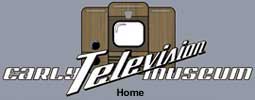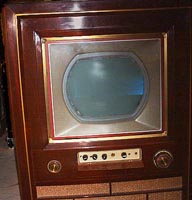This was a photo shoot, and not a storage situation. Actually, this carton with its precious lading is upside-down. Its horsehair like cushion, on which the CRT faceplate normally rests, has been removed. Here, the 15G is being hung by its flange.
15GP22 S/N I7391 was moved from its birth in Lancaster to its final abode. You've stumbled upon a cache of NIB 15GP22s on a pallet somewhere in the back of a condemned old warehouse [Wishful thinking? Nearly happened in 1997 in CA.] Here's what you'll find/do when you open the TOP of the carton. 
1. The 15GP22 is face down. All you see is this tic-tac-toe lattice with the 15G's neck nestled in the center square. Remove it and flip it on the ground. 2. This first square insert further protects the neck. Carefully remove it and on the pile it goes. 3. The bulb is supported after if flares out with the third insert. Lift it straight out and Frisbee it onto the pile. 4. Finally, before you carefully lift out your new baby, this thickest insert surrounds the CRT flange. Your pile is complete. The faceplate pad is nestled in the bottom of the carton. |


